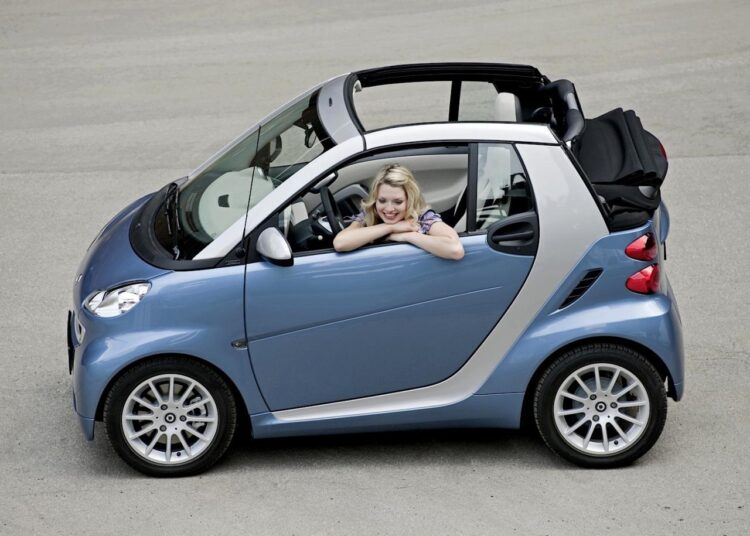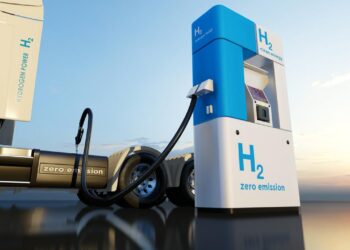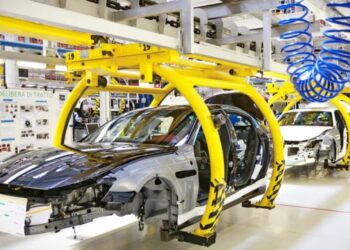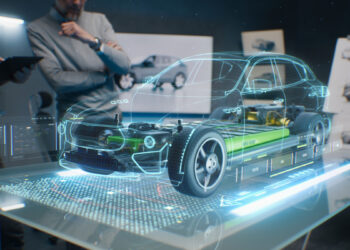The automotive landscape is undergoing a profound metamorphosis, transforming vehicles from mere mechanical conveyances into sophisticated, intelligent, and highly personalized digital platforms. This revolution is powered by the integration of cutting-edge technology, effectively turning every modern vehicle into a “smart car.” Smart car features explored today go far beyond basic infotainment, encompassing an intricate web of connectivity, advanced driver-assistance systems, predictive analytics, and seamless integration with our digital lives. This isn’t just about convenience; it’s about enhancing safety, optimizing efficiency, and delivering an unprecedented level of comfort and personalization, fundamentally redefining the driving and ownership experience. The smart car isn’t a futuristic concept; it’s the present, and it’s rapidly evolving to make our journeys safer, smarter, and more enjoyable.
What Makes a Car “Smart”?
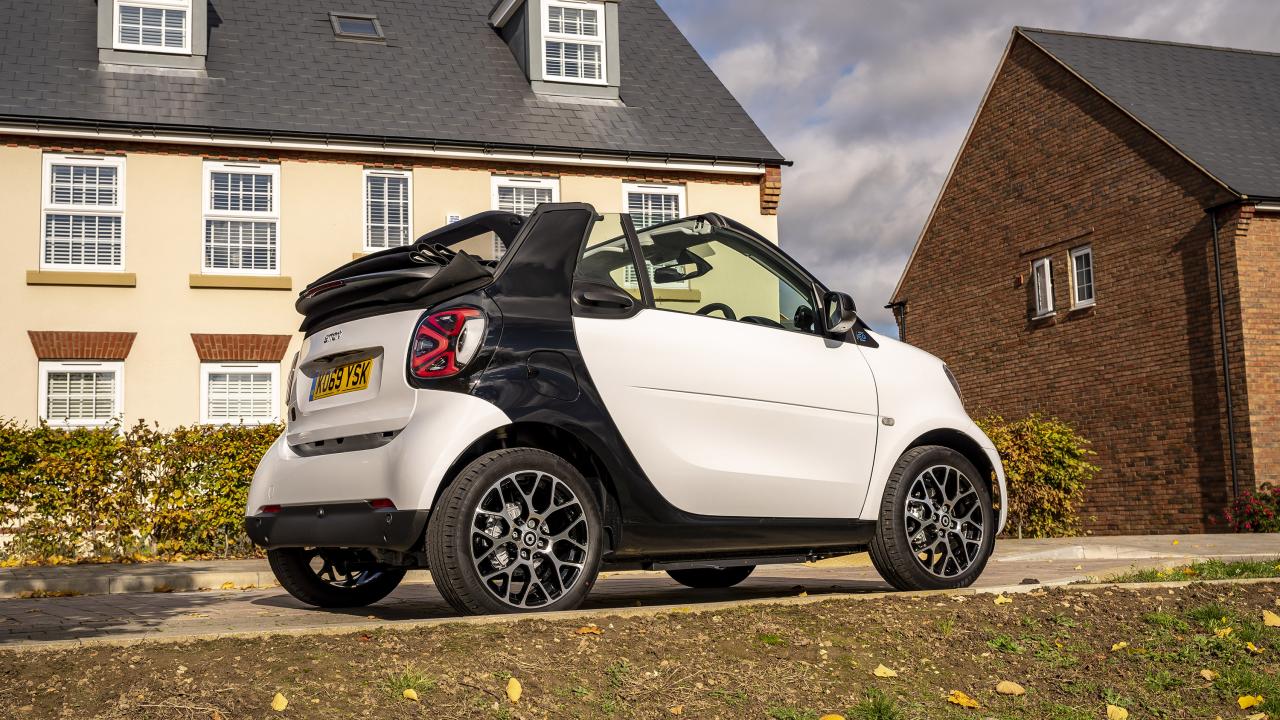
The evolution of a conventional car into a “smart car” is driven by the integration of several core technological pillars that enable intelligence, connectivity, and responsiveness.
A. Ubiquitous Connectivity
At the heart of any smart car is its ability to connect to the internet and communicate with other devices and infrastructure.
- Embedded Modems: Most new smart cars come with integrated cellular modems (e.g., 4G LTE, increasingly 5G) that provide a constant internet connection, independent of a smartphone. This enables telematics services, over-the-air (OTA) updates, remote diagnostics, and in-car Wi-Fi hotspots.
- Smartphone Integration: Technologies like Apple CarPlay and Android Auto seamlessly mirror smartphone interfaces onto the car’s infotainment screen, allowing drivers to safely access navigation, music, messaging, and communication apps. Bluetooth connectivity remains standard for calls and audio streaming.
- Vehicle-to-Everything (V2X) Communication: This is a crucial future-forward technology that allows cars to communicate with various entities:
- V2V (Vehicle-to-Vehicle): Cars directly exchange data on speed, direction, braking, and potential hazards, enabling proactive collision warnings and cooperative driving maneuvers.
- V2I (Vehicle-to-Infrastructure): Vehicles communicate with traffic lights, road sensors, parking garages, and other road infrastructure, providing real-time data on traffic flow, road closures, and optimal routing, potentially reducing congestion.
- V2P (Vehicle-to-Pedestrian/V2N – Vehicle-to-Network): Communication with pedestrians (via their smartphones) for safety alerts, and with broader cloud networks for fleet management, navigation services, and urban planning insights.
- Cloud Computing: Vast amounts of data generated by smart cars (e.g., driving patterns, vehicle health, infotainment usage) are processed, stored, and analyzed in the cloud. This enables advanced analytics, remote services, and personalized feature delivery.
- High-Bandwidth Networks (5G): The rollout of 5G networks is vital for low-latency, high-volume data transfer, which is essential for V2X communication, real-time HD mapping, and the future of advanced autonomous driving.
This intricate web of connectivity transforms the car into a mobile node within the broader Internet of Things (IoT).
B. Advanced Sensor Arrays
Smart cars are equipped with a sophisticated array of sensors that act as the vehicle’s “eyes” and “ears,” enabling it to perceive its surroundings with high precision.
- Cameras: Multiple cameras provide visual information for a wide range of functions, including identifying lane markings, traffic lights, road signs, other vehicles, pedestrians, and cyclists. They are crucial for object recognition, surround-view parking systems, and driver monitoring.
- Radar: Emits radio waves to detect the distance, speed, and direction of objects, performing reliably in various weather conditions (rain, fog). Essential for adaptive cruise control, blind-spot monitoring, and automatic emergency braking.
- Lidar (Light Detection and Ranging): Uses lasers to create precise 3D point cloud maps of the vehicle’s surroundings. Lidar offers highly accurate distance measurements and detailed environmental understanding, often used for high-definition mapping and obstacle avoidance, particularly for autonomous driving.
- Ultrasonic Sensors: Short-range sensors typically used for parking assistance, detecting nearby obstacles at low speeds, and enabling features like automatic parking.
- GPS and High-Definition (HD) Mapping: Precise localization using GPS (Global Positioning System) combined with highly detailed, frequently updated HD maps provides centimeter-level positioning accuracy, crucial for advanced navigation and autonomous functions.
- Internal Vehicle Sensors: A multitude of sensors monitor the vehicle’s internal state, including tire pressure, fluid levels, engine performance, brake wear, and battery health, providing data for diagnostics and predictive maintenance.
These sensors, working in concert and often in a process called “sensor fusion,” create a comprehensive, real-time understanding of the vehicle’s immediate environment and its own operational status.
C. Artificial Intelligence (AI) and Machine Learning (ML)
The raw data collected by sensors and connectivity technologies is transformed into actionable intelligence by sophisticated AI and ML algorithms.
- Perception and Object Recognition: AI algorithms process vast amounts of sensor data to accurately identify, classify, and track objects in the vehicle’s environment (e.g., distinguishing between a moving car, a stationary bicycle, and a human pedestrian).
- Behavior Prediction: ML models analyze the behavior of other road users (pedestrians, cyclists, other vehicles) to predict their likely actions, allowing the smart car to anticipate and react proactively to avoid potential hazards.
- Decision-Making and Planning: Based on perceived environment and predictions, AI systems make complex driving decisions, such as optimal routes, speed adjustments, lane changes, and evasive maneuvers, while adhering to traffic laws.
- Natural Language Processing (NLP): Enables intuitive voice control for infotainment, navigation, communication, and vehicle functions, allowing drivers to interact with the car naturally and hands-free.
- Personalization: AI learns individual driver preferences (e.g., music tastes, climate settings, preferred routes, driving style) to personalize the in-car experience, proactively suggesting content or adjusting settings.
- Predictive Analytics for Maintenance: ML algorithms analyze historical and real-time vehicle performance data to predict potential component failures, enabling proactive maintenance and reducing breakdowns.
- Gesture Control: Some smart cars use cameras to interpret hand gestures for controlling infotainment or other functions, offering an alternative to touchscreens.
AI is the “brain” that turns raw data into intelligent actions and personalized experiences, making the car truly “smart.”
Why Smart Cars Are the Future
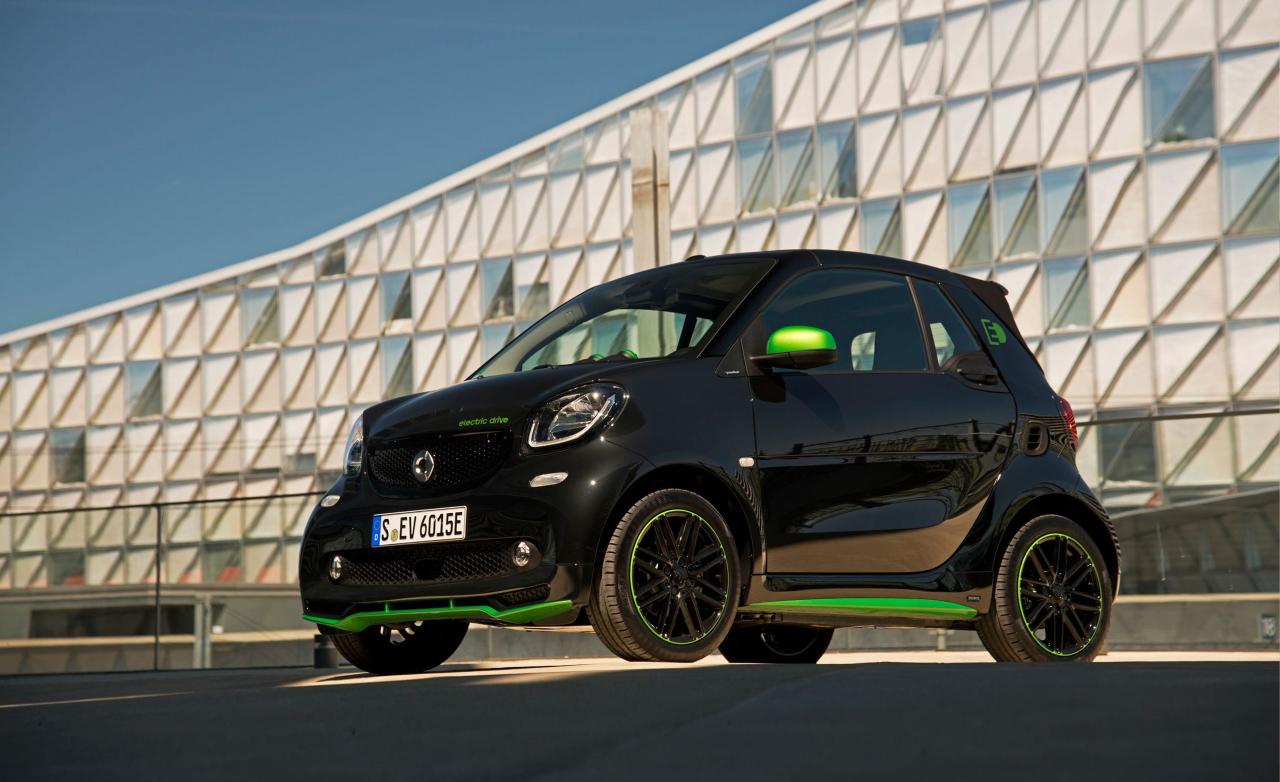
The integration of these advanced technologies in smart cars offers a wide array of benefits that enhance safety, convenience, efficiency, and entertainment.
A. Enhanced Safety and Security
Perhaps the most significant benefit of smart car features is their potential to drastically reduce accidents and improve overall road safety.
- Advanced Driver-Assistance Systems (ADAS): These systems actively assist the driver in preventing collisions:
- Automatic Emergency Braking (AEB): Detects potential front-end collisions and automatically applies brakes if the driver doesn’t react.
- Lane-Keeping Assist (LKA) / Lane Departure Warning (LDW): Warns the driver if the vehicle drifts out of its lane and can even steer it back.
- Adaptive Cruise Control (ACC): Automatically adjusts vehicle speed to maintain a safe distance from the car ahead.
- Blind-Spot Monitoring (BSM) / Rear Cross-Traffic Alert (RCTA): Warns of vehicles in blind spots or approaching traffic when backing up.
- Forward Collision Warning (FCW) / Pedestrian Detection: Alerts drivers to potential collisions with vehicles or pedestrians ahead.
- V2V and V2I Communication for Proactive Safety: Receiving warnings from other vehicles about sudden braking or road hazards around blind corners, or from infrastructure about traffic light changes or road closures, significantly enhances situational awareness.
- Emergency Call (eCall) Systems: In the event of a crash, smart cars can automatically alert emergency services with precise location data, significantly reducing response times and potentially saving lives.
- Stolen Vehicle Recovery: GPS tracking and remote immobilization features aid in locating and recovering stolen vehicles, enhancing security.
- Driver Monitoring Systems: In-cabin cameras and sensors can detect signs of driver fatigue, distraction, or impairment, providing alerts to prevent accidents.
- Predictive Road Conditions: Using crowd-sourced data from connected cars to alert drivers to slippery patches, potholes, or other road hazards in real-time.
These active and passive safety features are making roads safer for everyone.
B. Unprecedented Convenience and Personalization
Smart car features are designed to make the driving experience more comfortable, intuitive, and tailored to individual preferences.
- Seamless Navigation with Real-Time Updates: Built-in navigation systems leverage real-time traffic data, weather conditions, and even predictive analytics to suggest the fastest, most efficient routes, dynamically rerouting to avoid congestion or incidents. They can also integrate parking availability.
- Personalized Infotainment Systems: Access to streaming music, podcasts, audiobooks, and video services (for passengers), often with personalized recommendations based on past listening habits. Cloud profiles ensure settings transfer across different vehicles.
- Voice Assistants and Natural Language Processing: Intuitive voice commands allow drivers to control vehicle functions, make calls, send messages, search for destinations, and access information hands-free, minimizing distraction.
- Remote Vehicle Control via Smartphone Apps: Owners can remotely lock/unlock doors, start/stop the engine, pre-condition the cabin climate, check fuel/battery levels, or locate their car in a crowded parking lot using their smartphone.
- Integrated Payment Systems: Pay for fuel, parking, tolls, or even order food directly from the car’s infotainment system, streamlining transactions and reducing friction.
- Customizable Digital Cockpits: Fully digital instrument clusters allow drivers to customize the display to show essential information (speed, navigation, ADAS alerts) in their preferred layout.
- In-Car Wi-Fi Hotspot: Provides high-speed internet access for passengers’ devices, making travel more productive or entertaining.
- Proactive Suggestions: The car might learn daily routines and proactively suggest routes, remind about appointments, or even offer to pre-heat the cabin based on weather.
These features transform the car into a highly connected and personalized mobile hub.
C. Enhanced Efficiency and Cost Savings
Smart car technologies contribute to optimizing vehicle performance, reducing fuel consumption (or electricity usage), and lowering overall running costs.
- Optimized Routing: By utilizing real-time traffic data and predictive analytics, smart cars help drivers choose the most efficient routes, reducing travel time, fuel consumption, and wear and tear.
- Predictive Maintenance: Sensors continuously monitor vehicle components and performance data. AI algorithms analyze this data to predict potential failures before they occur, allowing for proactive maintenance and preventing costly breakdowns. This extends the vehicle’s lifespan.
- Fuel/Energy Efficiency Coaching: Some systems provide real-time feedback to drivers on how to optimize their driving style for better fuel economy or EV range (e.g., smoother acceleration, regenerative braking suggestions).
- Optimized Fleet Management: For commercial fleets, connected car data enables real-time tracking, optimized routing for delivery vehicles, driver behavior monitoring, and remote diagnostics, leading to significant operational savings.
- Reduced Idling: Smart traffic management systems, aided by V2I communication, can optimize traffic light timings to reduce time spent idling in congestion.
- Insurance Discounts: Data on safe driving habits collected by smart car systems can be used for usage-based insurance (UBI) models, potentially leading to lower premiums for careful drivers.
These efficiencies benefit both the vehicle owner’s wallet and the environment.
D. New Business Models and Revenue Streams
The connected and intelligent nature of smart cars is creating entirely new economic opportunities and transforming the automotive value chain.
- Subscription Services: Beyond the initial purchase, manufacturers can offer subscription services for premium features (e.g., advanced navigation, in-car Wi-Fi, extended connectivity services, enhanced ADAS features).
- Over-the-Air (OTA) Updates as a Service: Manufacturers can deploy new features, performance enhancements, and software fixes remotely, creating new revenue opportunities and extending the vehicle’s relevance and value over time.
- Data Monetization (Ethical): Anonymized and aggregated vehicle data (e.g., traffic patterns, road conditions, parking availability) can be valuable for urban planning, targeted advertising, and various other services, creating new revenue streams for carmakers or third-party data providers.
- Personalized In-Car Commerce: Opportunities for targeted advertising, loyalty programs, and direct purchasing of goods and services (e.g., fuel, parking, food delivery) directly from the car’s infotainment system.
- Mobility-as-a-Service (MaaS) Integration: Smart cars are integral to MaaS platforms, facilitating seamless ride-sharing, car-sharing, and other on-demand transport services.
- Automotive Cybersecurity Services: The growing complexity of connected cars creates a demand for specialized cybersecurity solutions and services.
- Extended Vehicle Lifecycle: Through OTA updates and predictive maintenance, smart cars can maintain functionality and even gain new features over time, extending their useful life and potentially their resale value.
This shift transforms the car from a one-time purchase into a continuous service platform.
The Road Ahead for Smart Cars
Despite their immense promise, the widespread adoption and full realization of smart car potential face several significant hurdles.
A. Cybersecurity Risks
The extensive connectivity and software reliance of smart cars present serious security vulnerabilities.
- Vulnerability to Hacking: Smart cars are essentially complex computers on wheels, making them potential targets for cyberattacks that could compromise vehicle control, personal data, or even physical safety.
- Data Breaches: The vast amounts of personal and driving data collected by smart cars are attractive targets for data breaches, raising concerns about privacy and identity theft.
- Remote Exploits: The ability for malicious actors to remotely access and manipulate vehicle systems.
- Software Vulnerabilities: Bugs or flaws in complex software code can be exploited by attackers.
- Supply Chain Attacks: Cyber threats can originate from vulnerabilities in the software or hardware components sourced from various suppliers.
Robust cybersecurity measures, continuous monitoring, and rapid patch deployment are paramount for building and maintaining public trust.
B. Data Privacy and Ownership
The sheer volume of data collected by smart cars raises significant ethical and legal questions.
- Who Owns the Data? Is it the driver, the vehicle owner, the manufacturer, or the service provider? Clear legal frameworks are needed.
- Consent and Transparency: Ensuring consumers understand what data is being collected, how it’s used, and providing clear mechanisms for consent and opt-out.
- Data Monetization Ethics: The ethical implications of monetizing personal driving data and how to ensure fair compensation or benefit to the data subject.
- Regulatory Compliance: Navigating a complex patchwork of global data privacy regulations (e.g., GDPR, CCPA) that vary significantly by region.
- Anonymization Challenges: Ensuring that “anonymized” data cannot be reverse-engineered to identify individuals.
Addressing these privacy concerns with transparent policies and strong security is critical for consumer acceptance.
C. Regulatory and Legal Frameworks
Existing laws were not designed for intelligent, connected vehicles, creating a need for new legislation.
- Liability in Case of Accidents: When an ADAS feature or a V2X communication system contributes to an accident, who is legally liable: the driver, the manufacturer, the software provider, or the infrastructure operator?
- Standardization: The lack of universal standards for V2X communication, data formats, and cybersecurity protocols can lead to fragmentation and hinder widespread interoperability.
- International Harmonization: Developing consistent regulations across different countries and regions to ensure seamless operation of smart car services globally.
- Software Certification: Developing processes to certify the safety and reliability of complex automotive software.
- Over-the-Air Update Regulations: Ensuring safe and secure deployment of remote updates, and defining liability for issues arising from them.
Governments worldwide are grappling with how to create adaptable and forward-looking legal frameworks that keep pace with rapid technological advancements.
D. Cost and Accessibility
The advanced technology embedded in smart cars can significantly increase their upfront cost and introduce ongoing expenses.
- High Upfront Cost: The integration of numerous sensors, powerful processing units, and connectivity hardware adds to the manufacturing cost of vehicles, making them less accessible for budget-conscious consumers.
- Subscription Fees: Many premium smart car features are offered as subscription services, adding to the long-term cost of ownership and potentially creating a tiered experience.
- Network Coverage and Reliability: Constant connectivity relies on robust cellular network coverage, which can be an issue in rural or underserved areas, limiting the functionality of some features.
- Digital Divide: Ensuring that the benefits of smart car technology are accessible to all segments of society, not just the tech-savvy or affluent.
- Retrofitting Challenges: The difficulty and expense of integrating advanced smart features into older, non-connected vehicles already on the road.
Balancing cutting-edge technology with affordability and widespread accessibility is a critical challenge for the industry.
E. Public Trust and Acceptance
Building consumer confidence in complex, data-driven smart car features is paramount for mass adoption.
- Trust in Automation: For ADAS features and future semi-autonomous capabilities, consumers need to trust the technology’s reliability and safety in real-world scenarios.
- Misconceptions: Addressing public misunderstanding about what smart car technology can and cannot do, and managing expectations.
- Fear of Data Misuse: Overcoming public apprehension about vehicle data collection, tracking, and potential misuse by companies or governments.
- System Reliability and Redundancy: Ensuring that smart car features are consistently reliable and have adequate redundancy to prevent failures.
- User Experience (UX): Designing intuitive and user-friendly interfaces that enhance rather than distract from the driving experience, ensuring features are easy to understand and operate.
Public education, transparent communication, and consistent, reliable performance are key to fostering widespread acceptance.
Conclusion
The comprehensive exploration of smart car features reveals a profound revolution transforming the automotive industry. What was once a mechanical marvel is rapidly evolving into a digital, intelligent, and highly connected extension of our lives. From significantly enhancing safety through advanced driver-assistance systems and V2X communication to providing unparalleled convenience, personalization, and efficiency, the benefits of smart cars are undeniable. While the critical challenges of cybersecurity, data privacy, regulatory adaptation, and cost remain, the relentless pace of technological innovation and the strategic investments from global manufacturers and tech giants signal an unstoppable momentum. The smart car isn’t merely a trend; it’s a foundational element for the future of mobility, paving the way for safer roads, smarter cities, and a more enjoyable and seamless driving experience. The journey ahead is undoubtedly intelligent, and our vehicles are leading the way.

